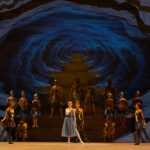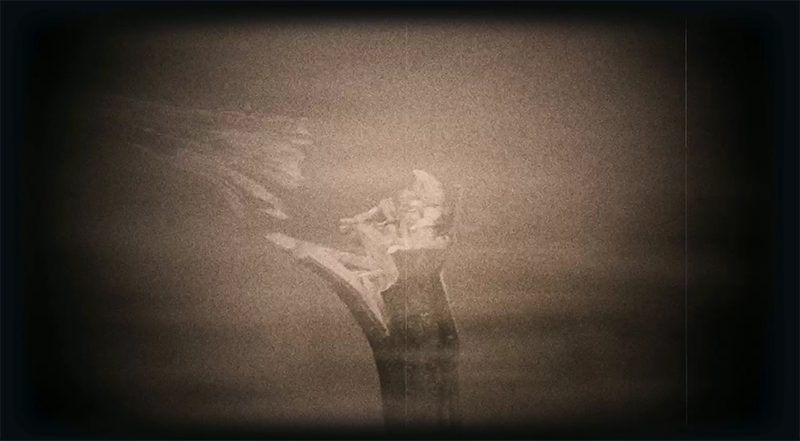
What’s more important: people or profit? This is the question at the heart of Arthur Miller’s enduring classic, All My Sons, and the play’s message is every bit as timely now as it was when it first opened on Broadway in 1947. Revived in 2019 in a powerhouse production with Tracy Letts, Annette Bening and Benjamin Walker in the leading roles, All My Sons returned to the stage at the end of the Roundabout Theatre Company’s 2018-19 season and almost immediately netted a Tony award nomination for Best Revival of a Play.
Director Jack O’Brien (Tony winner for Hairspray, Henry IV and The Coast of Utopia) made no attempt to update this story from its roots in World War II, allowing the play to speak for itself about each individual’s conflicting responsibilities to family, work, community and the greater good. Joe and Kate Keller must come to grips with the loss of their son, Larry, a pilot who went missing in action three years earlier. Joe’s company manufactures machine parts for war planes, and a defective batch led to the deaths of 21 pilots — a crime for which Joe’s partner is serving time, but Joe is not. [Tyler Joseph, frontman for Twenty One Pilots, drew inspiration from All My Sons for the indie pop duo’s moniker —ed.] The details surrounding Larry’s disappearance, his family’s struggle to cope with his loss, and the truth about the defective parts all come to light on a sunny spring day in the backyard of the Kellers’ home in an Ohio suburb, demonstrating that moral questions have no easy answers, and actions often have dramatic consequences.
This production of All My Sons stays true to the original, with a single, stationary set designed by Douglas W. Schmidt (Into the Woods, 42nd Street, The Front Page), which allows the story to unfold in a comfortably realistic setting. The idyllic home environment experiences subtle visual changes as the day progresses, however, brought about by the artful lighting design of six-time Tony Award winning designer Natasha Katz. Katz’s talent for lighting classic American plays netted her the most recent Tony, for Long Day’s Journey Into Night in 2016, as well as the award in 2014 for The Glass Menagerie.
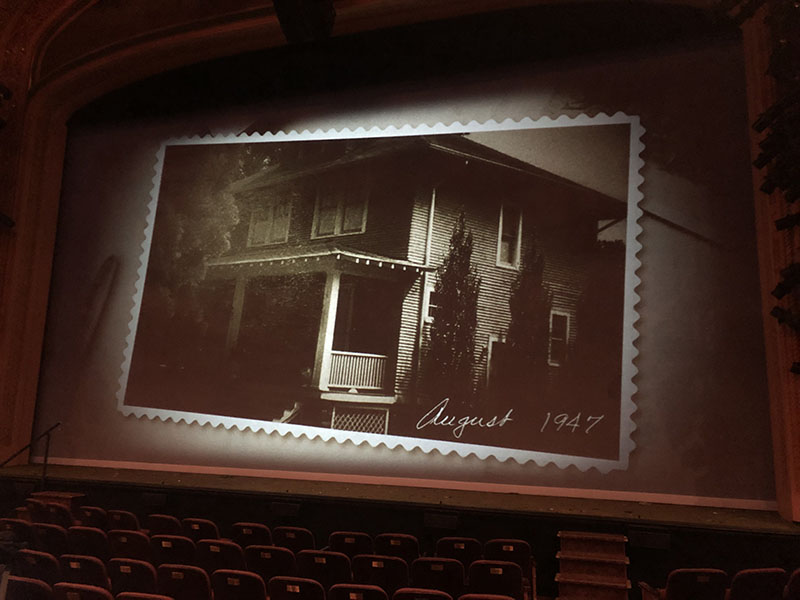
The Storm Before the Calm
O’Brien made one substantial change to the traditional staging. The play is written to open with a downed tree in the Kellers’ backyard, split and destroyed by lightning in a storm the previous night. Instead of simply implying this storm, however, O’Brien decided to bring it to life.
When house lights dim to half at the top of the show, a gray scrim downstage of the set darkens and becomes a projection screen. Period footage of World War II fighter planes combine with elements of the storm. Lightning and thunder surround the audience, coming from the back and sides of the house as well as onstage, immersing them in the maelstrom. Suddenly, lightning strikes a tree, and the tree cracks and breaks. Seconds later, the scrim vanishes to reveal the same tree lying on its side, under a clear sky with sunshine streaming through the branches of the yard’s remaining foliage.
“During the projected storm, we added lightning throughout the auditorium rather than opening up on an idyllic scene,” said Katz. “It was Jack’s idea to have lightning surround the auditorium. The lightning and sound are effectively like Sensurround. The audience is drawn into the weather and the violence and the terror of it. Then when the curtain goes up, you see one of the most beautiful days that you can imagine.”
Projections designer Jeff Sugg (Charlie and the Chocolate Factory, Sweat, Magic/Bird) built the ominous preamble, working closely with Katz and sound designer John Gromada. “Jack is very articulate,” said Sugg by phone from New York. “He gave the design team very good direction. He said, ‘When the house goes to half, I want the audience to see the storm, see the tree break, and then use a scrim effect to take us into our world.’ So I started making storyboards, rough edits of the sequence. Then I got the rough edit of the music, and about 17 versions later, we have what we see onstage.”
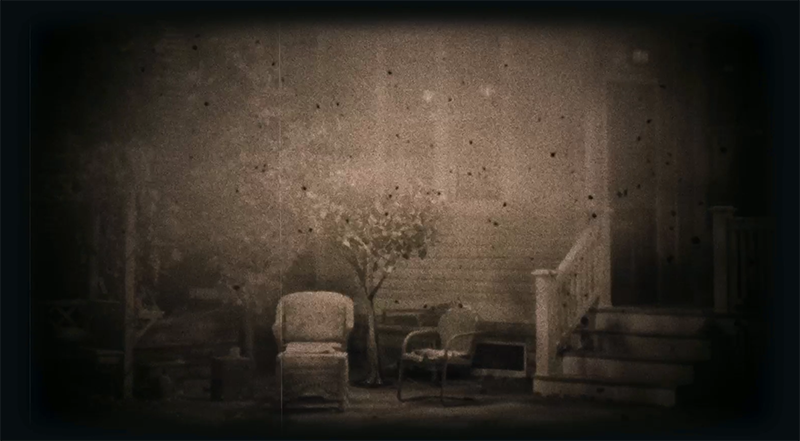
Sugg combined photography, slow-motion video and three-dimensional animation to produce a realistic sequence of the tree flexing and breaking, making it resemble the actual tree onstage as closely as possible. “We needed to have that particular, specific tree,” he said. “Kathy Fabian [props supervisor at the Roundabout] had sent me photos of the one we’re working from. You never see the tree onstage standing up, so I could take a little poetic license with it.”
Not only did the sequence require the tree, but it needed the backyard and the house behind it as well. “All of the footage that has to do with the house is photographed or taped by us,” said Sugg. Film of the war planes came from royalty-free government stock, and Sugg drew some images from his own reservoir of stock footage.
“I had done probably a week and a half or perhaps two weeks of work, and then I hired a 3D model animator who had done a week on things in preproduction,” he said. “This effect was the first thing we tackled in dry tech, and we timed it out there. It was pretty well mapped at that point, but during those weeks I had one animator working on the composition itself, and the edit, and then a separate person who was continuing variations on the tree model.”
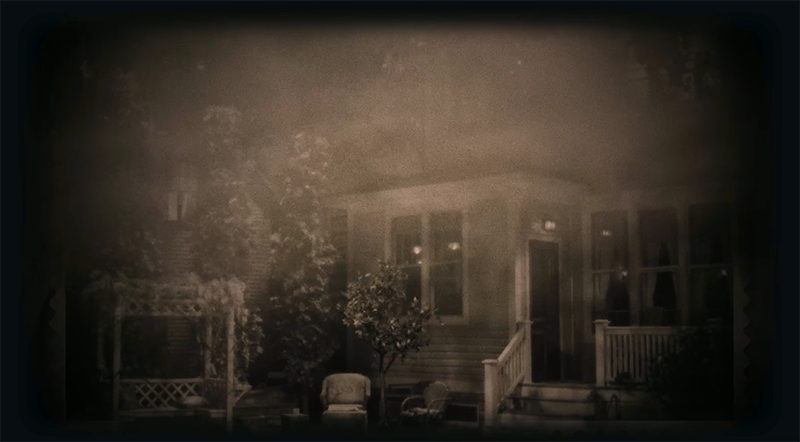
The most dramatic moment in the sequence comes when the tree branch breaks. “You see it for half a second,” Sugg said, “but it’s a combination of slow-mo footage with particle effects on top of it, and some other manipulation on top of that.”
The sequence is controlled by Dataton Watchout multi-display software, projected using Epson Pro L1750UNL WUXGA 3LCD laser projectors, which deliver 15,000 lumens of brightness. “Lasers are quiet, but the biggest reason we have them is to turn them off — within five seconds, we can have it quiet for the play,” he said. “Before the sound effects are done, the projector is off and silent. Which is like, thank you God.”
The total effect stuns the audience into awed silence, often followed by applause even before lights come up onstage. “In 50 percent of the previews that I watched, we got applause with lights up on the curtain,” said Sugg. “That’s always a heartening moment.”
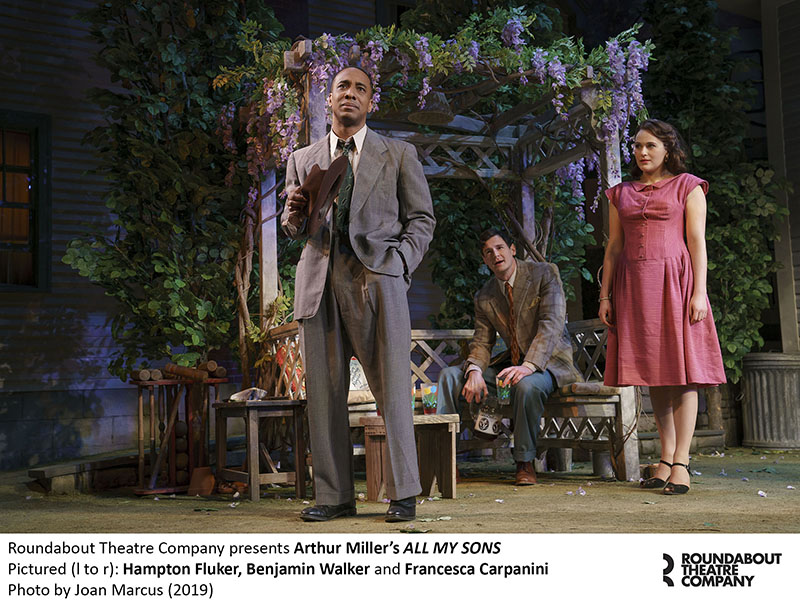
Revelations in Paradise
“A lot of classics are reimagined, and All My Sons has had many productions that are surreal, abstract, turned on its head,” Katz said in considering the play’s relevance today. “But Jack wanted to ground us in the period. It’s about morality, what is right for the individual to do versus what’s right for the community.”
The 24-hour timeframe formed the basis for Katz’s lighting design, but not in a way that restricted her own ability to tell a visual story. “The lighting is symbolic of many of the feelings that the characters have — hiding things in broad daylight, and how you can hide your lies in shadows. It’s also very tied to nature. It’s tied to the sky because their son was a pilot, it’s tied to the everyday life of doing the dishes, waking up in the morning, having lunch, having dinner, and the neighbors are all around.”
Katz chose her lighting instruments from the Roundabout’s ample inventory with particular care for this play, she noted. “The equipment has a kind of humanity to it,” she said. “We are using incandescent bulbs. It’s earthy, it’s of the land. It’s not cutting edge. That’s not what All My Sons is about.”
The lighting inventory includes 270 ETC Source Four ellipsoidals, 60 Source Four LED Series 2 Lustr luminaires of various sizes and 33 Source Four PARs: one with a very narrow spot lens, f15 with wide flood lenses and 17 with extra wide floods. Seventeen three-inch Fresnels, 21 Color Kinetics ColorBlaze TR4 color-changing LED battens and 11 MAC Encore CLD moving lights and eight Martin Atomic 3000 strobe lights gave Katz the versatility she required. An ETC Ion 2K lighting console provided the lighting control.
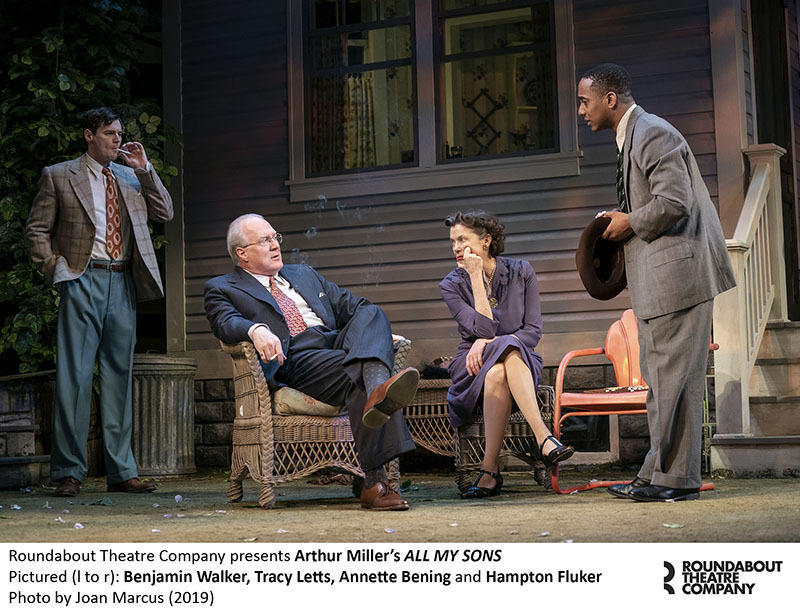
Katz sets the stage with a sunny day, heavily dappled with light streaming through the leaves of the mature trees surrounding the Keller home. “Almost every light has a leaf gobo in it,” she said. “The lighting is filled with foliage. At the beginning of the play it’s nine in the morning, and it’s bright and airy, it’s clean, it’s hot because it’s August. It’s light straw colors and warm sunlight colors. It really does feel like this is the perfect American family; what could possibly go wrong?”
Miller allows the underlying conflict to expose itself in small ways throughout the first act, enough that the audience begins to realize that all is not well. The Kellers’ problems don’t become clear until well into the second act.
“Act II takes place at sunset, and was the hardest act to work through,” Katz said. “It starts kind of dusky, and then more and more truth comes out, it gets darker and darker, and more and more shadowy. But since the last act takes place at 3 a.m., we let the night in Act II be a more comforting night. The second act has a kind of warmth and happiness to it; the shadows are filled with color, they’re not scary. Then something absolutely horrible happens at the end of Act II.”
Miller shatters the safety and comfort of the family unit in Act III, and Katz rose to the challenge of creating an atmosphere for such a plot twist. “Act III is shocking, ghostly, dead, filled with gobos, with more shadows in it,” she said. “People walk in and out of the light, and the characters can move away from the light if they want to. You’re very aware of the secret that has been told, the lies that have come out, and in this case, the lighting doesn’t work in counterpoint at all, it works exactly parallel to the emotions in the scene. I’d call it graveyard-like. Jack used the words ‘bone white.’ The color gets absolutely sucked out of everybody. They’re drained. They’re done.”
Months after completing this show, Katz still speaks of it with passion. “I’m still reeling from it, honestly,” she said. “With these [Boeing] 737s, we’re going through the same thing now. It’s uncanny that it’s still so topical today.”
